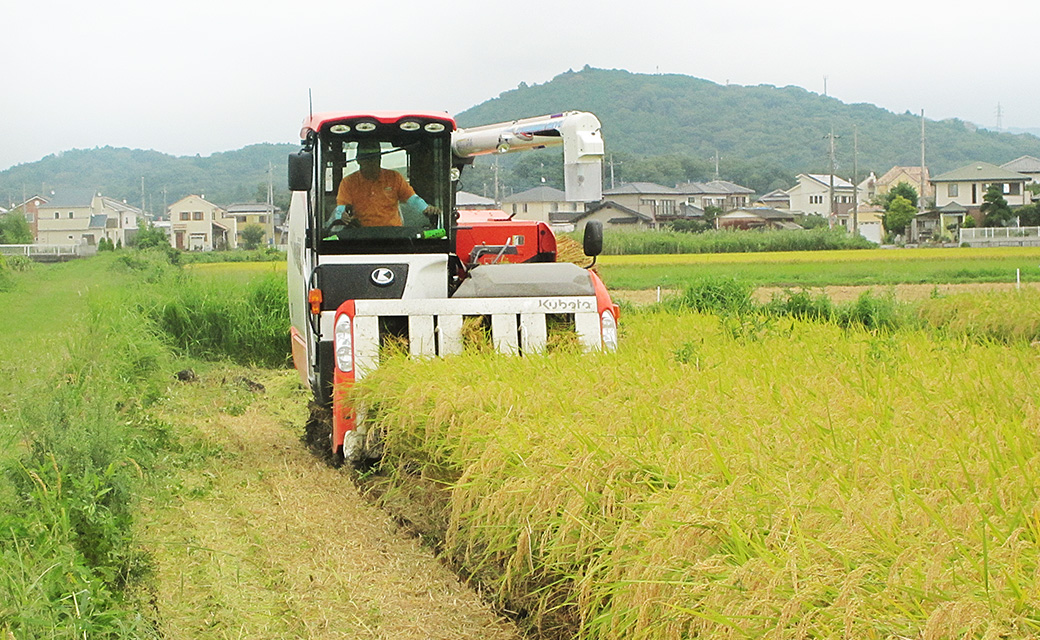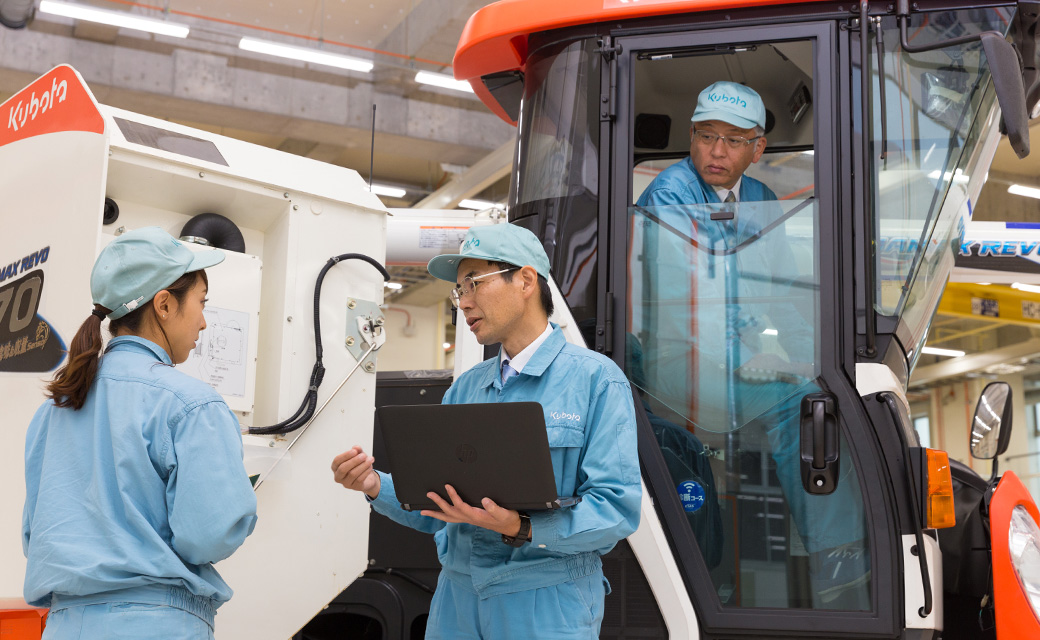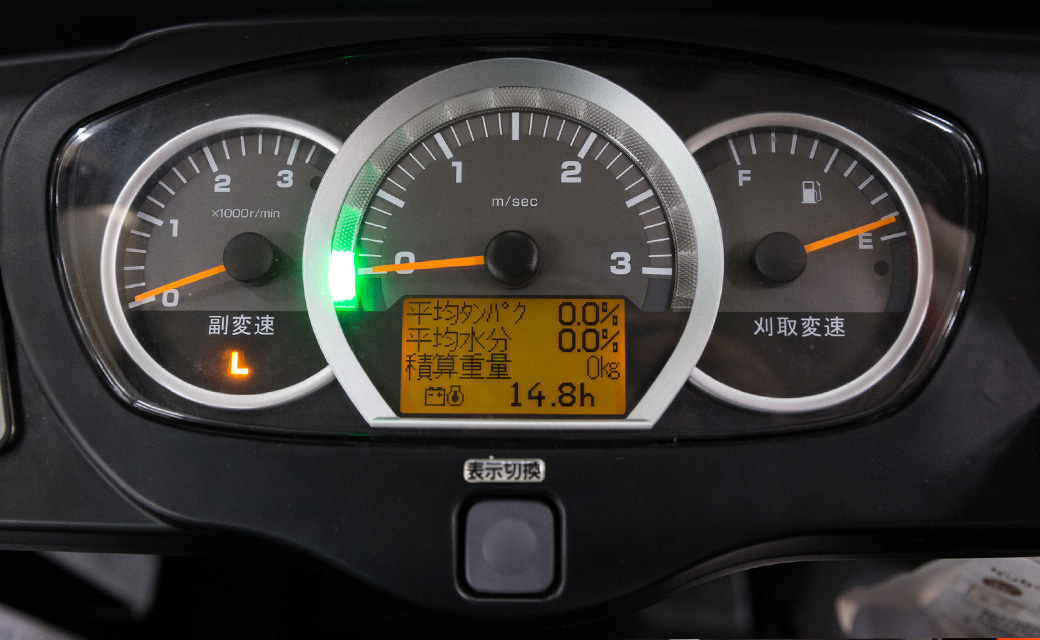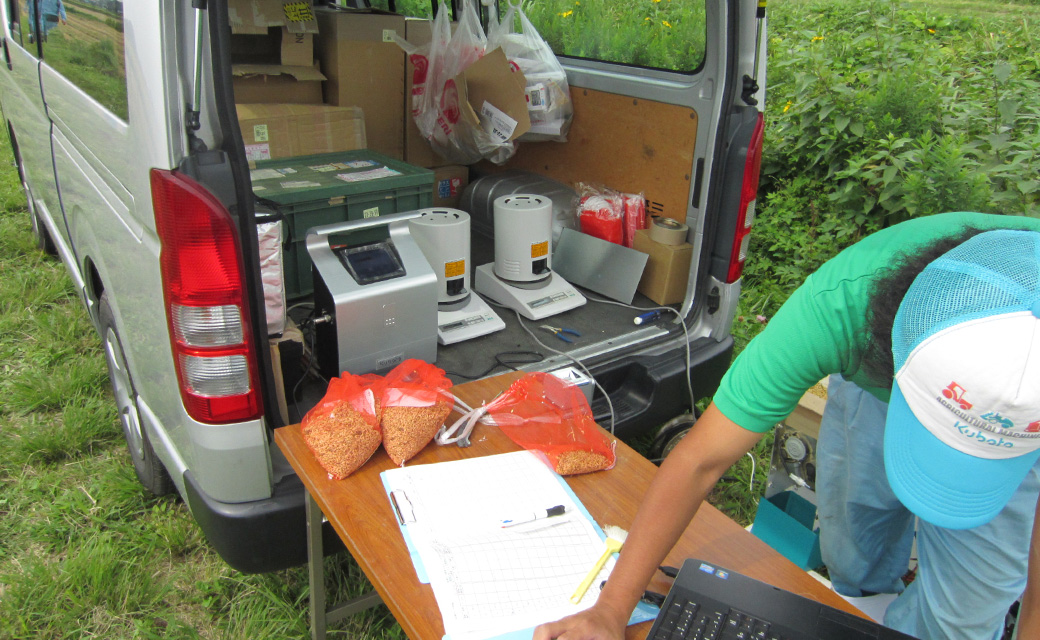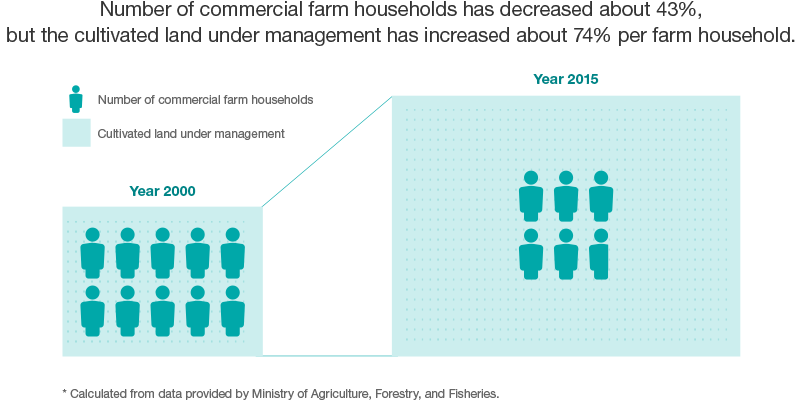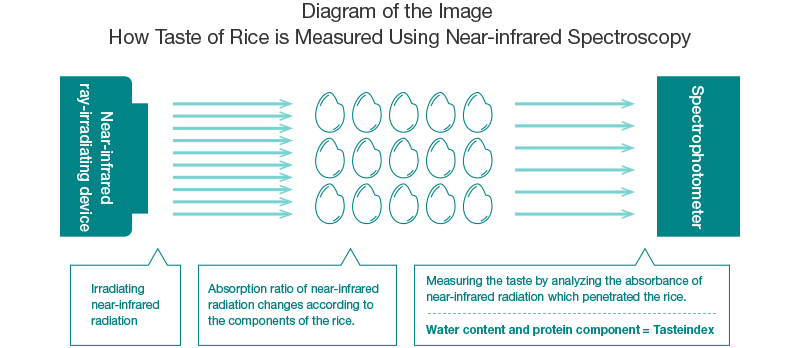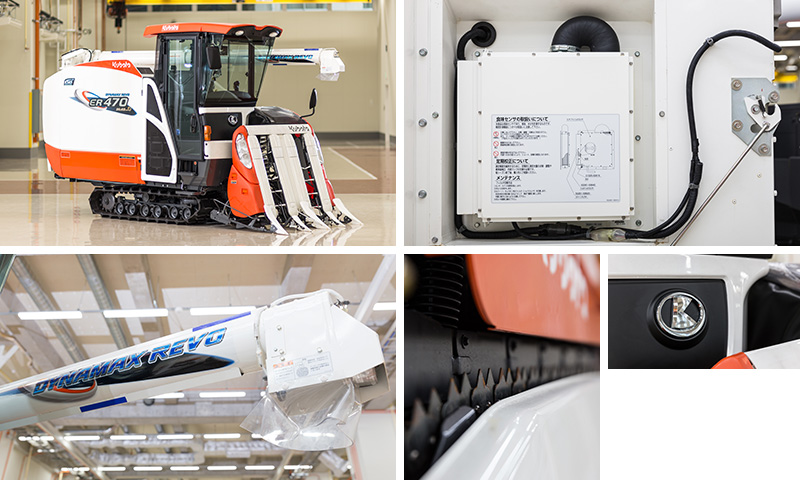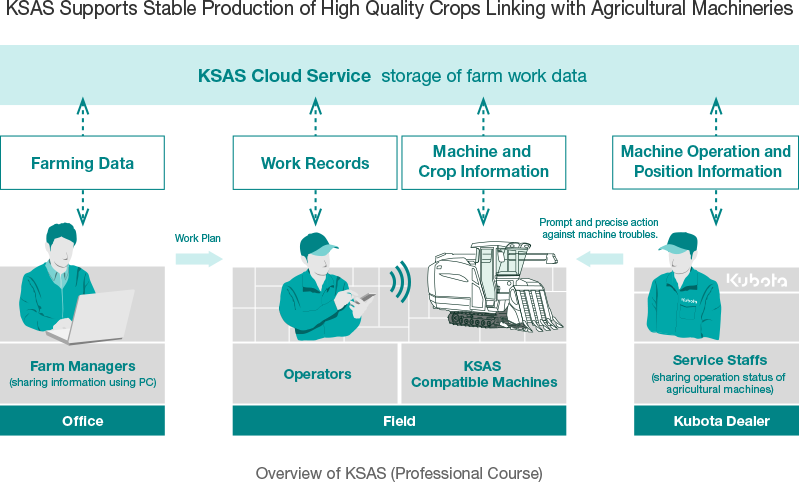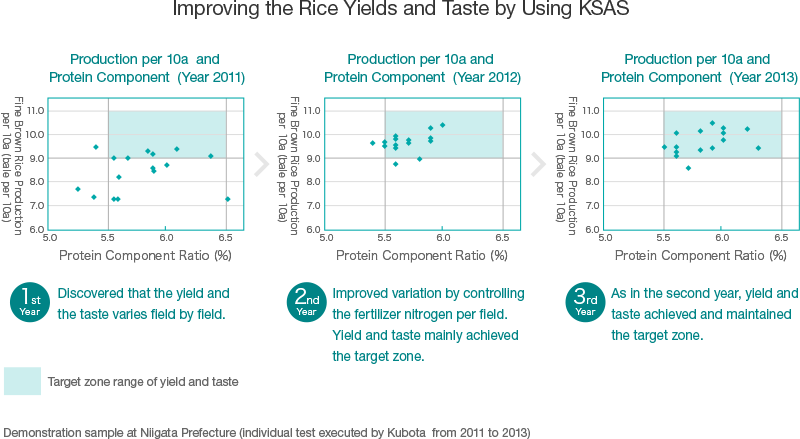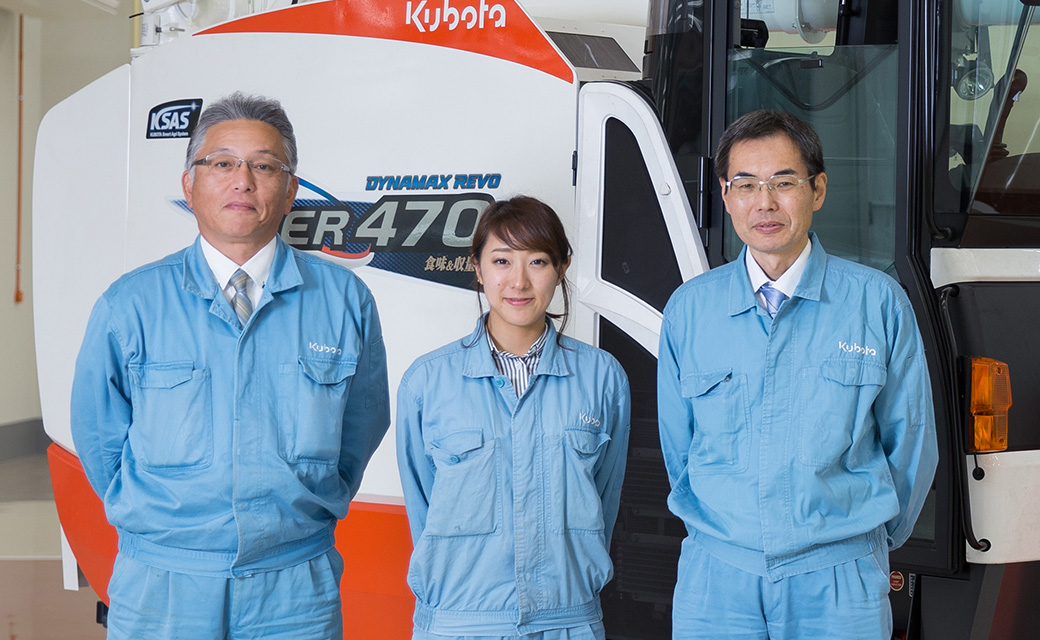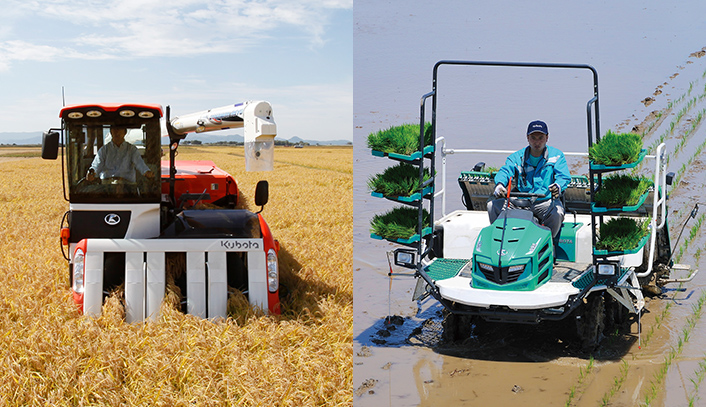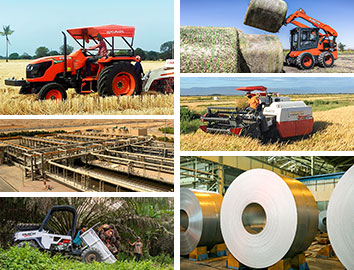Kubota Creates the Future of Agriculture, For Better Food and Better Lives
Combine Harvester / KSAS
Food shortages are worsening as the world’s population increases. The safety and security of food is a major concern. The population of agricultural workers continues to decline. Because food is so essential for our survival, these problems have a major impact on our lives. Kubota has a close relationship with farmers and agriculture, and has grappled with these issues alongside farmers. We want to change the future of food by realizing “the Future of Farming” in order to increase the income of farmers, produce agricultural products with greater value for markets, and enable competitive farm management. With our Kubota Smart Agri System (KSAS) and combine harvesters that fuse industry-leading food production technology with bi-directional ICT, our innovations and our mission continue.
Facing challenges together with farmers
As concern grows over global food shortages due to abnormal weather, population increases and other problems, Japan remains dependent on imports for more than half of its food supply. Its food self-sufficiency rate is around 40%*, placing it among the lowest of major advanced nations. One of the main factors behind this is the further decline in the population of agricultural workers, resulting from the aging of farmers and a lack of successors.
It is imperative that young people be enabled to produce crops of the same quality as skilled workers, that the lands managed by each farmer (the divisions of fields to cultivate crops) be expanded, that profit and competitiveness be ensured through stable yields, and that awareness be raised among the individuals who are willing to take up farming. Kubota listened to the urgent calls from food producers and markets, and set out to develop products that make wealth-generating farm management possible.
- According to research by the Ministry of Agriculture, Forestry and Fisheries
A combine harvester that knows how food tastes
Kubota, a leader in the agricultural machinery industry for 40 years, took on the development of a surprising idea in 2012.
This idea was, “Can we make a sensor that can measure taste as well as yield at the time of harvesting?” The combine harvester division made this request to the measurement systems division. Kubota’s spectroscopic analysis technology rivals that of precision instrument manufacturers. The company has a “Rice Taste meter” that measure the taste score of rice and a “Fruit Selector” that measures sugar content of fruits and vegetables using near-infrared spectroscopy non-destructively. Our goal was to apply these technologies to measure the rice’s protein and moisture content, which are decisive factors for its taste, during harvest. This would allow farmers to look back at visual data on rice components and improve their plans for the next year’s crops and fertilizer.
The challenge was that past products were developed with the assumption that they would be used in relatively favorable environments, so even within the framework of the available technology, using them on actual farms required a series of trial and error. The vibrations, water, heat, and dust that are inevitable in agricultural work are the archenemies of precise sensors. The sensors also required the durability to stay mounted on the equipment. Kubota’s engineering and sales departments worked together as they visited farmlands throughout Japan and conducted repeated and careful analyses and trials of rice, wheat and barley over intervals of two weeks to one month. They carefully examined more than 3,000 samples over three years, and finally achieved their result in 2014: the DYNAMAX REVO combine harvester with taste and yield sensors, the first of its kind in the industry. This moment marked the beginning of a new era in agriculture.
We want to provide comprehensive support for farms!
This wish led to the KSAS two-way cloud service.
The Kubota way does not end with just innovating technologies. To maximize the system’s usability on farms, the company also devised a system to provide constant and comprehensive support. Utilizing the big data gained from the use of the taste and yield-sensing combine harvester, in 2014 we also launched KSAS, an ICT-based service that supports farm management based on actual data.
Although progress is being made in Japan’s agriculture in terms of selective breeding of crops, farming work itself has changed little and is falling behind other advanced nations. Growth is extremely difficult simply by relying on experience, intuition or repeating lessons from skilled elders, and so improving efficiency backed up by data will be essential for the future.
KSAS has put science and visualization to work for agriculture by connecting farm managers, workers, and Kubota’s service division in real time over its system. Storage and retrieval of work records and farm operational data, sharing of machinery operating conditions, and other tasks can be performed instantaneously, leading directly to improvements in work efficiency, productivity and profitability. The system’s greatest advantage is that it can give central and two-way feedback on a farm’s plan adjustments and quick judgments made looking at the day’s field conditions, This makes farm management more flexible. It has also demonstrated with data that improvements can be seen not only by individual farmers but also entire districts. Even now, KSAS continues to make further advancements.
Creating the Future of Agriculture – Kubota's never-ending mission
Through the development of the taste and yield-sensing combine harvester and KSAS, Kubota has opened new doors for agriculture. Focusing on our next vision, we are working to bring together all of our exclusive technologies and create a brighter tomorrow for people and food. How can we further enhance KSAS data to boost competitiveness through farm management optimized for weather conditions and local characteristics? Can we develop support for expanding sales channels so that more crops with better value can be put on the market? Can we use taste sensors on non-cereals such as soybeans and corn, and transform agriculture on a global scale? Our mission and research for food production know no bounds.
It’s all about staying alongside farmers and creating the future together. And Kubota has the wisdom and the passion to make this happen.
